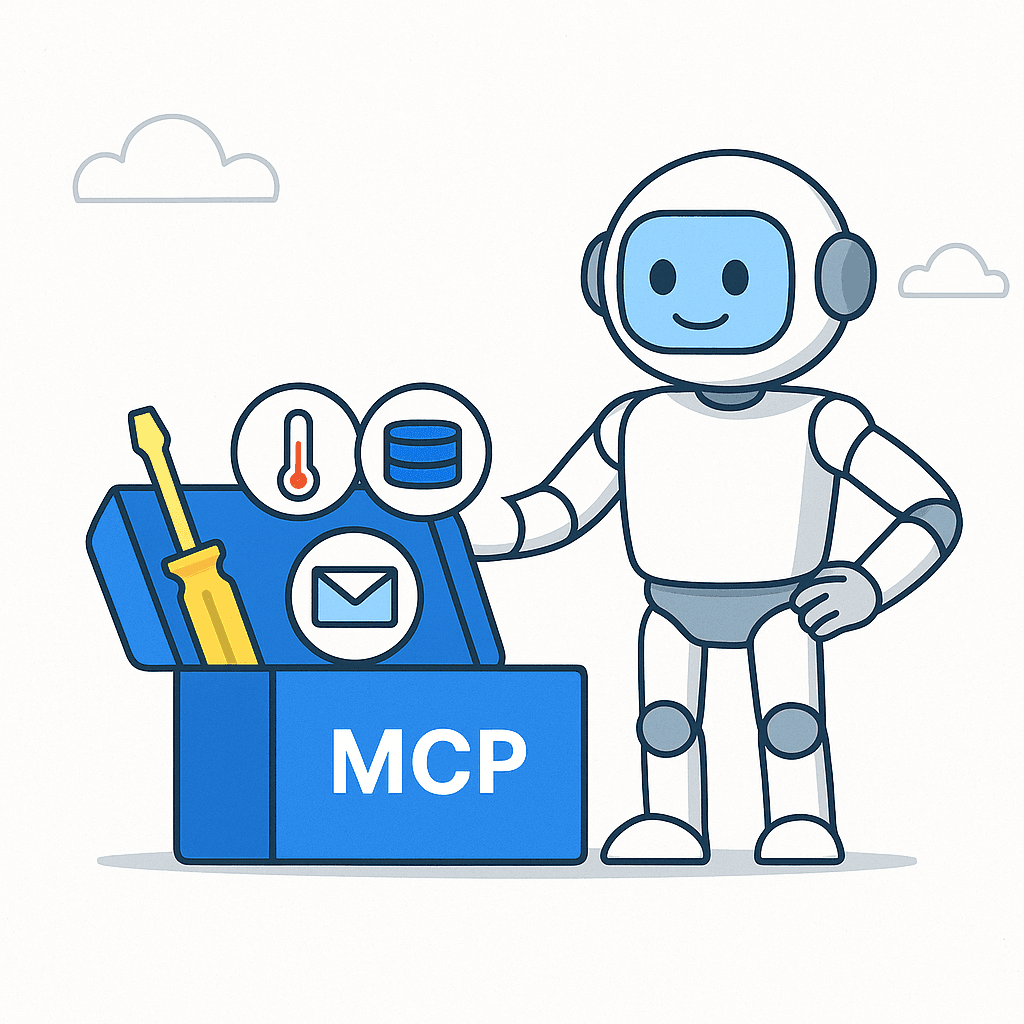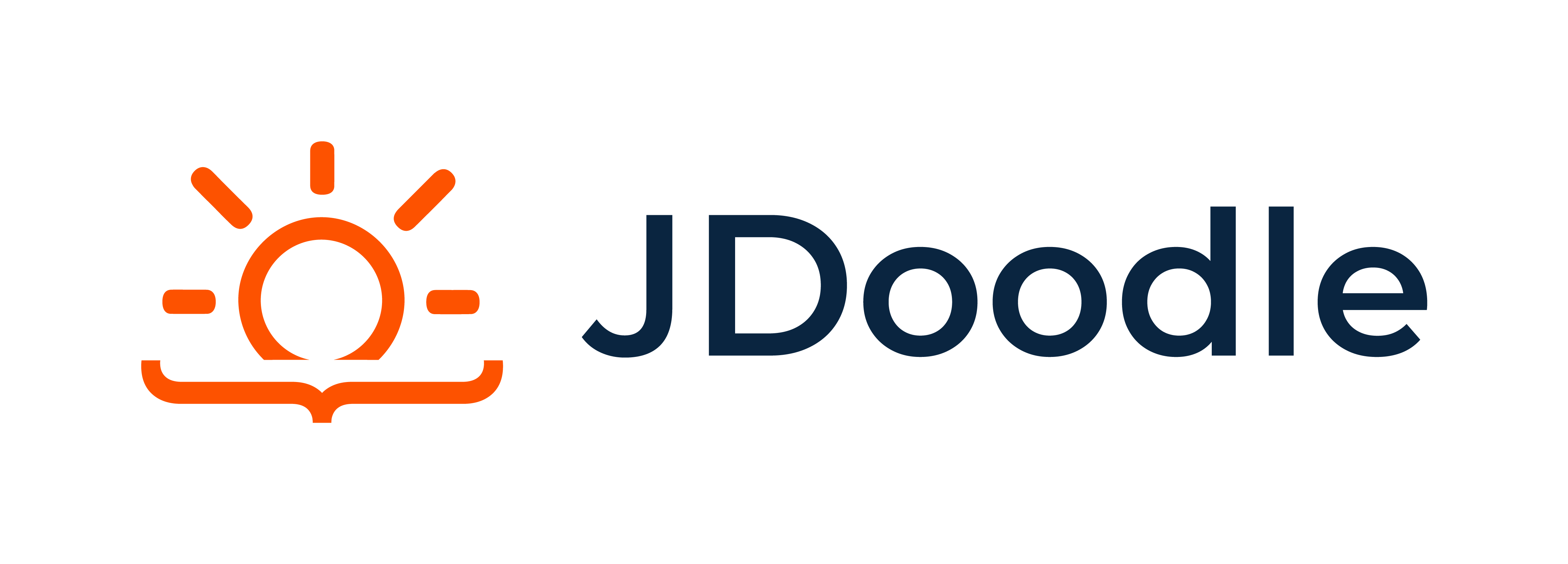It all started with OpenAI’s function calling in 2023, which changed the way everything worked. Now, everywhere you look, all you see is AI. So, it wasn’t long before people needed a standard interface for execution, data fetching, and tool calling.
And that all changed when Anthropic (Claude) released MCP. It is slowly changing the AI landscape. It creates a shared language for software to communicate with each other.
And now, JDoodle.ai is putting MCP into action in a way that makes building websites easier, secure.
What is MCP?
It must be clear from the introduction that MCP is like a connecting dot for software. But let’s discuss that further.

MCP or Model Context Protocol is a way for AI tools to connect with other software, tools, or databases so they can get real-time information.
Think of it like giving your AI assistant access to a toolbox. Need a screwdriver (real-time weather data)? It’s there. A measuring tape (database query)? Easy. A specialized tool like a laser level (an internal API)? No problem. MCP doesn’t just hand over the tools; it helps the AI know which tool to pick, when to use it, and how to use it effectively.
Instead of relying solely on what it was trained on, MCP allows the model to ask:
“Hey, can you fetch this data?”
It creates a context-aware feedback loop, the model can identify when it needs help from the outside world and make that request dynamically.
Think of it like this:
Without MCP: The AI gives advice.
With MCP: The AI rolls up its sleeves and does the job.
How JDoodle.ai uses MCP
JDoodle.ai is changing the way people are vibe coding; it makes developing websites easier than ever. With features that make the process smoother to use natural language for building a website, JDoodle.ai is truly bringing about a revolution in the world of vibe coding.
And one of these revolutions is brought about with the use of MCP. JDoodle.ai brings MCP to life with a clean, simple experience. It all happens through our Integration Panel.
It comes laden with various APIs that transform a simple AI-generated website into a fully functional webpage ready to be launched in a matter of seconds.
Here’s what it looks like:
- You want to use SendGrid to send emails? Just connect it.
- Need to update records in HubSpot? Click to integrate.
- Want to trigger something on Zapier, use Auth0, or fetch from Gemini? Add the connection.
No copy-pasting API keys. No writing backend logic. You add the services securely once, and JDoodle.ai does the rest.
What does this mean? The AI now has permission to use those tools, but it never sees your actual credentials. It can send emails, update CRMs, or pull analytics, all while keeping your secrets safe.
JDoodle.ai in action
Now let’s look at how JDoodle.ai handles integration with a real-world example.
Imagine you’re launching a new product, say an AI-powered resume builder, and you want to create a simple waitlist signup page.
You don’t just want a form; you also want to store the signups in Airtable, send a welcome email via SendGrid, and add users to a Mailchimp campaign. On top of that, you’d like to track page visits using Google Analytics, collect feedback through a Typeform embedded at the bottom of the page, and maybe even notify your team in real time through Intercom or Zapier.
With most tools, this would require writing multiple API calls, managing and protecting secret keys, and patching everything together by hand. But JDoodle.ai makes this process dramatically easier.
All you need to do is describe your requirements:
“Build a waitlist signup page for my resume builder launch. When someone signs up, store their data in Airtable, send a welcome email using SendGrid, and add them to my Mailchimp list. Add Google Analytics for tracking and embed a Typeform at the bottom.”
Once you’ve given your prompt, JDoodle.ai figures out which tools to use and asks you to enter the required API keys securely in the integrations panel (located at the top-right of your page). You don’t need to touch the code; just paste the key into the right spot. The AI never sees the raw key, keeping everything secure. After integration, you can refresh the project if anything doesn’t seem connected yet or guide the AI with further prompts. You can even request support for a tool if it’s not already listed.
That’s JDoodle.ai’s MCP in action: turning AI from a text generator into a smart agent that can build, connect, and execute real-world workflows.
Ready to try it yourself?
Whether you’re a developer looking to prototype faster or a founder building your MVP without writing a single line of code, JDoodle.ai with MCP is the ultimate shortcut. Try it out and see how much time (and sanity) you can save.

